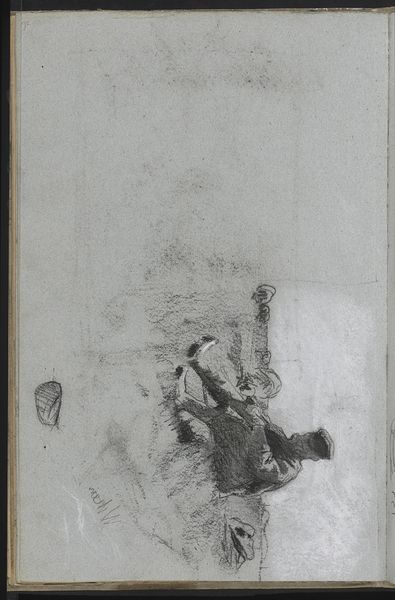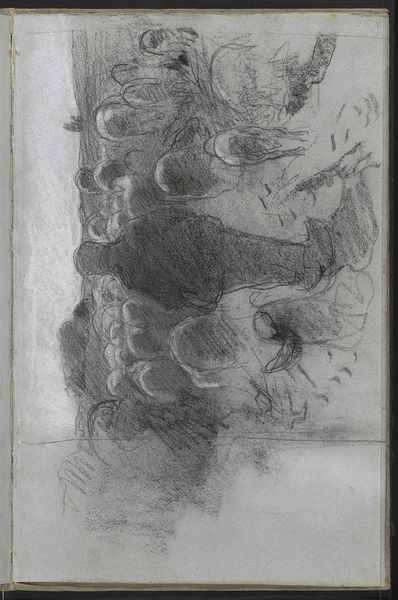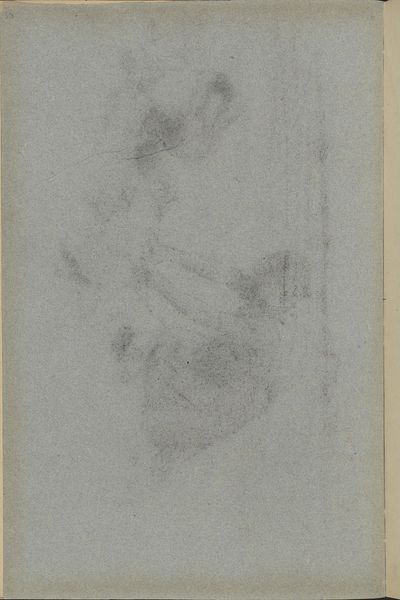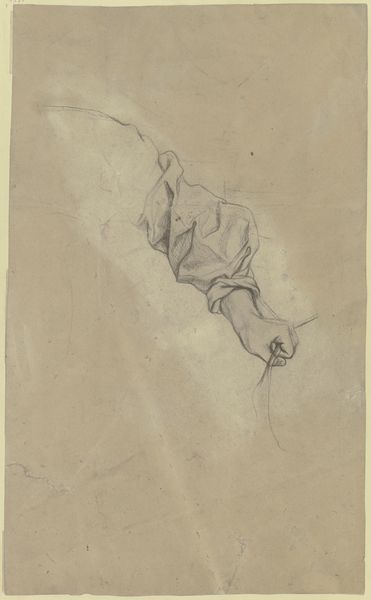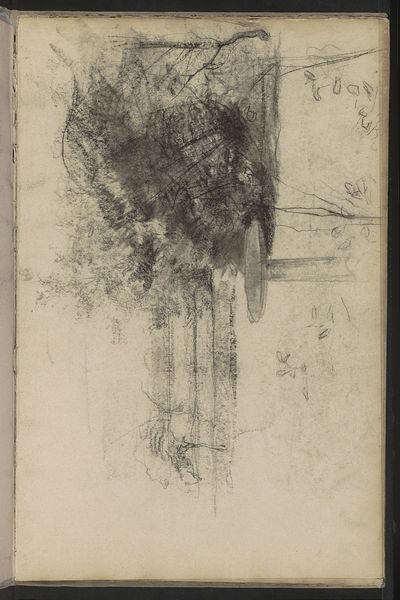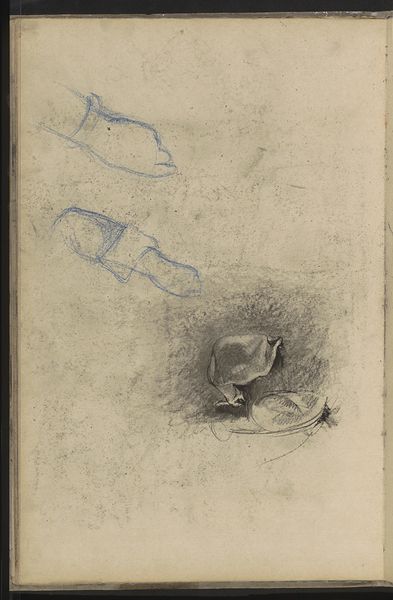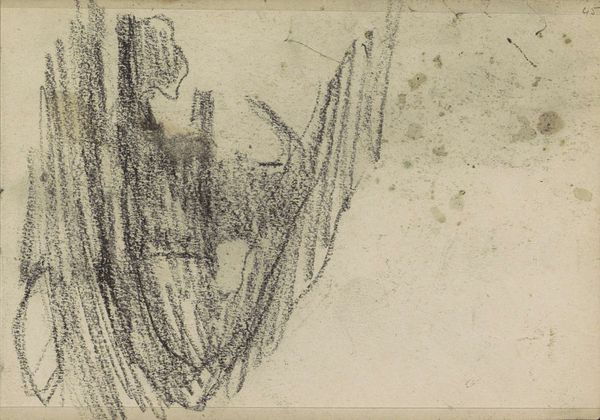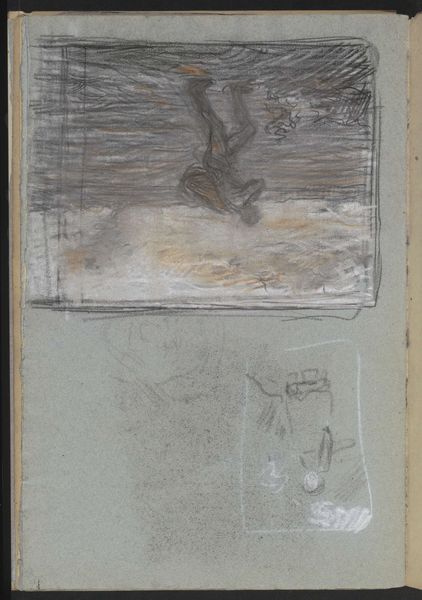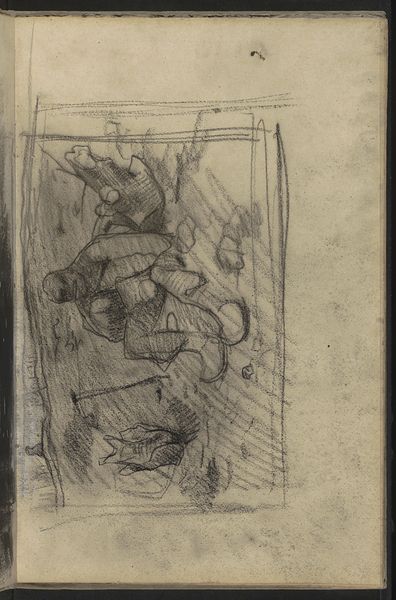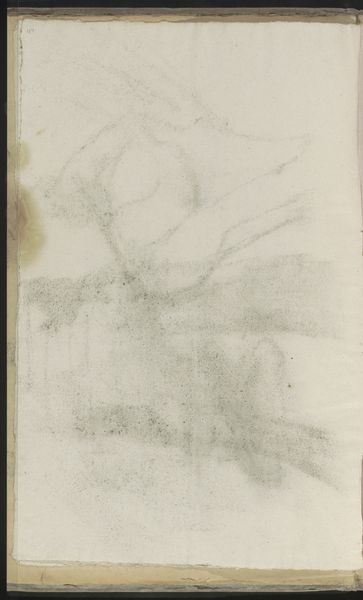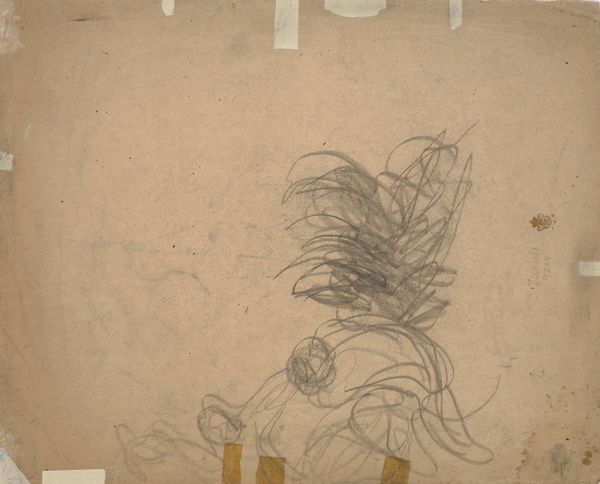
drawing, paper, charcoal
#
portrait
#
drawing
#
landscape
#
charcoal drawing
#
figuration
#
paper
#
underpainting
#
charcoal
#
realism
Copyright: Rijks Museum: Open Domain
Editor: So, we're looking at Willem Witsen's "Zittende schaapherder," made around 1884 to 1887. It's a charcoal drawing on paper and I find the image kind of haunting in its stark simplicity. What stands out to you as you consider this drawing? Curator: Well, immediately I’m drawn to think about the socio-political context of the late 19th century and the romanticization of rural life. Drawings like these helped create an idea of an untouched, ‘authentic’ Dutch countryside, one often at odds with the realities of poverty and labor experienced by people like this shepherd. How might images like these have influenced policies and societal attitudes? Editor: That's interesting, because my first instinct wasn't to connect it to societal attitudes. I was thinking more about the purely aesthetic qualities. The contrast almost makes the figure disappear, though I like the technique. Curator: But can we truly separate the aesthetic from the social, especially when dealing with figuration? Witsen, exhibiting this drawing, wasn't just showcasing a technical skill, he was presenting a type. This image carries certain assumptions, about labor, class, and the countryside that need unpacking. Consider the potential buyers of such work. Editor: I suppose the romantic depiction of a shepherd could be interpreted differently depending on the viewer. Did the urban elite view it differently than someone from the rural working class? Curator: Exactly. This representation also played into growing nationalism. In the late 19th century, there was a cultural desire to solidify a Dutch identity rooted in tradition and landscape. How might we analyze this artwork as a product *of* this rising nationalism and not merely an innocent depiction *of* nature? Editor: So, it’s about connecting art with political movements and societal currents. Thank you, I’ve certainly learned to read the layers within seemingly simple imagery. Curator: And I am reminded how powerfully visual the construction of national identity can be, encouraging a continued awareness when encountering historical landscape imagery.
Comments
No comments
Be the first to comment and join the conversation on the ultimate creative platform.
